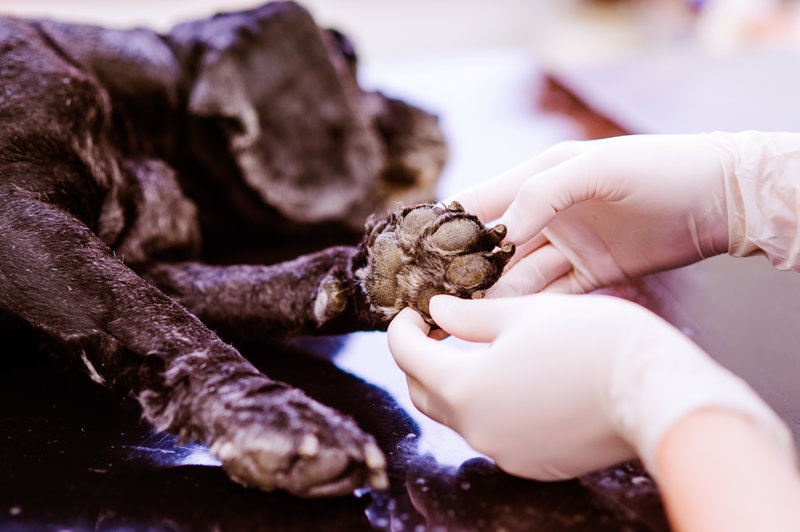Symptoms to detect osteoarthritis in dogs that you should know


Just as it happens to humans when they get older, osteoarthritis can also occur in dogs. With age, your joints begin to suffer from the passage of time and age. And their wear and tear can lead to osteoarthritis.
This condition, like humans, appears in dogs due to the wear and tear of cartilage. It is a degenerative disease, and the wear and tear of the cartilage can become so severe that the bones it separates begin to rub against each other.
Osteoarthritis in dogs usually affects mainly joints such as the elbow, hip, knee, spine, etc. They can be mild and not cause too much discomfort to the animal. Or be so severe that the dog suffers pain and cannot move comfortably. Luckily, osteoarthritis in dogs presents various symptoms. If they are detected in time, the animal can be taken to the veterinarian and treated to alleviate its symptoms and stop its progression. In addition, joint supports or protectors can also be used to strengthen the affected joints. This way you can have a better quality of life.
Symptoms of osteoarthritis in dogs
Osteoarthritis has no specific known cause. In some cases it can be caused by a joint problem that causes a problem in the joint. For example, hip dysplasia. It can also be accentuated by excess weight, due to the extra load it must bear. Or some medical treatments.
In any case, the symptoms you present will always be the same. Of course, they depend on which leg or hip of the dog is affected. But the one that is common to all of them is that, suddenly, the dog seems less active and moves less. Of running already, we don’t even talk. In addition, it may even begin to limp slightly.
It is important to observe if this limp is more pronounced when you get up after sitting for a while. Or lying down. And also if you limp more when it’s colder. This is because, like humans, low temperatures are not good for osteoarthritis in dogs.
In addition to these symptoms, it is also necessary to observe if, although the dog does not limp, it has difficulty climbing the stairs. You may also have joint pains, although this is more complicated to detect. If it is a lot, it usually resists walking. When it occurs in the front legs and the animal knows how to give the paw, it can be a method to know if it has pains. If you don’t want to kick up, your joint may hurt.
The dog may also suffer from some loss of tone and muscle mass. And you may even have a lack of appetite, or appear lethargic at times. If the osteoarthritis you have is quite advanced, your postures may become more forced. They will be due to the stiffness of the affected limb.
Another symptom of osteoarthritis in dogs can be inflammation of the affected paw. This will be caused by friction between the bones, which will affect the nearby muscles, which will suffer the consequences.
If you notice that your dog has one or more of these symptoms for a few days, it is advisable to take him to the veterinarian. This way you can examine it and diagnose if you suffer from osteoarthritis or any other milder ailment.
Recent Posts
What side effects do anti-inflammatories have in dogs?
Anti-inflammatory drugs, called NSAIDs (nonsteroidal anti-inflammatory drugs), are the most commonly prescribed pain reliever in…
Exercises to strengthen the dog’s hind legs
Improving the muscles of the hind limbs in dogs is an interesting option both in…
What to do with a dog that has back problems
Dogs can have health problems related to their limbs. But they can also have back…
Total or partial rupture of cruciate ligament in dogs
One of the most frequent injuries that dogs usually suffer is the rupture of one…
Solutions to hip dysplasia in dogs
Hip dysplasia in dogs is one of their most common inherited bone diseases. It is…
How to treat patellar luxation in dogs?
There is talk of patellar dislocation in dogs, when the patella, a small bone located…